
Of 100 million people living in Vietnam, the Kinh (Viet) people make up the ethnic majority, comprising around 86% of the population, the remaining 14% consists of 53 ethnic minorities. Living in the remote mountain and border regions, they have preserved a lifestyle deeply rooted in nature.

Traditional costumes of ethnic minorities in Vietnam. Photo: VOV
Every ethnic group in Vietnam possesses a distinct cultural heritage, filled with unique customs, traditions, and festivals. You're in for a surprise when you delve into their worlds. The beauty of the country is not only created by Kinh people. Join Asia King Travel to discover Vietnam's ethnic minorities through the following article.
Muong people are a large ethnic minority group with a population of over 1.2 million, concentrated in northern provinces like Hoa Binh, Thanh Hoa, and Nghe An. You can visit them in Mai Chau, Pu Luong, and Moc Chau.

Women are responsible for playing the gong in Muong people's festivals. Photo: Vietnam News Agency
Muong people share the most similarities with the Kinh people. The two ethnic groups can understand about 40% to 50% of each other's language. If you give a Muong text to a Kinh person, they can guess the main idea of the content. Many Vietnamese words have their origin in the Muong language.
There is a theory that the Muong and Kinh people have a common origin. During 1000 years of Northern domination, the part of the population residing in the mountains maintained their ancient identity and later became Muong people. The part in the midlands and lowlands mixed with the northerners in terms of culture, becoming Kinh people.
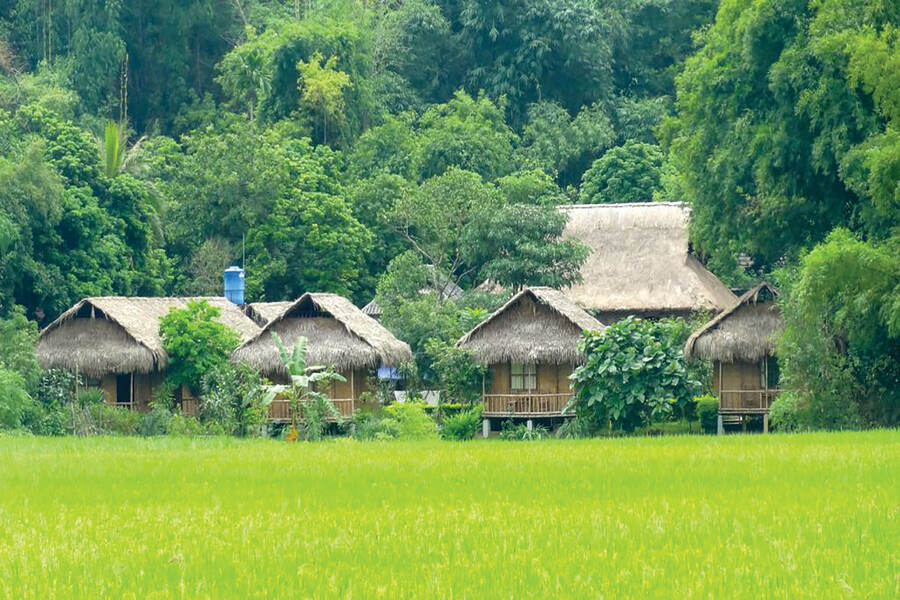
Stilt houses of Muong people in Mai Chau, Hoa Binh Province. Photo: Dai doan ket
The Muong are known for their unique stilt houses, elevated off the ground to protect against floods and wild animals. These houses are functional and beautifully crafted, with intricate wooden carvings and decorations. Living in these stilt houses has been a way of life for generations.
Tay people are the largest ethnic minority group, numbering around 1.6 million people. They primarily inhabit the mountainous regions of the northeastern provinces. Tay people have been present in Vietnam since the first millennium BC and were the first owners of the country.

A Tay family in traditional clothing. Photo: Trung Nguyen
Tay people have simple clothing, made from a long black piece of indigo-dyed fabric. Yet their cuisine and art are remarkable. “Luon" is a love melody often sung at weddings or to greet visitors. "Then" is a ceremonial chant used in rituals. They have a delicacy cake made from the eggs of a black ant, stir-fried with fat, salt, and onion having exotic feelings.
Thai people are an ethnic minority group found mainly in the northwest provinces of Vietnam, particularly Son La, Lai Chau, and Dien Bien, with a population of around 1.8 million. Due to the migration in 1990, they also lived in the Central Highlands.
They can be categorized into White Thai and Black Thai based on traditional clothing. White Tai women wear short-sleeved shirts in bright, white colors with silver buttons. Black Tai women wear short-sleeved shirts in dark colors. Girls love to wear jewelry such as necklaces, bracelets, and earrings. No wonder they are on top of Vietnamese beauty.
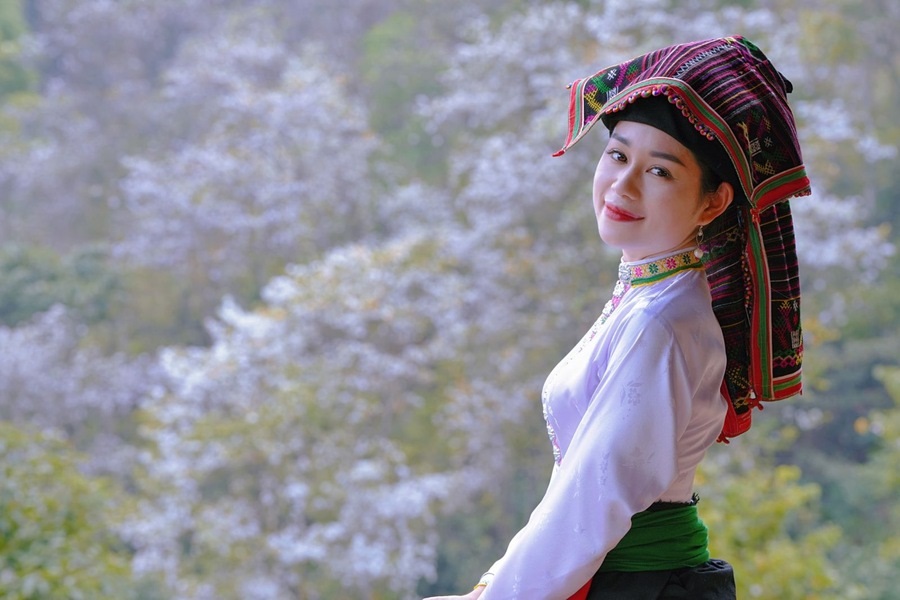
The beauty of a Thai girl wearing a Pieu scarf has been praised in many poems and songs. Photo: Nong thon moi
Their way of dressing is also deeply ingrained in their customs. Unmarried girls will wear an elaborately embroidered Pieu scarf. Once married, they will bun their hair on top of their head, and if their husband passes away, they may bun their hair low at the nape of their neck.
The Dao are an ethnic minority group found primarily in northern provinces, near the Chinese border. Their population of around 900,000. Dao people migrated from China to Vietnam from the 12th to the early 20th century.
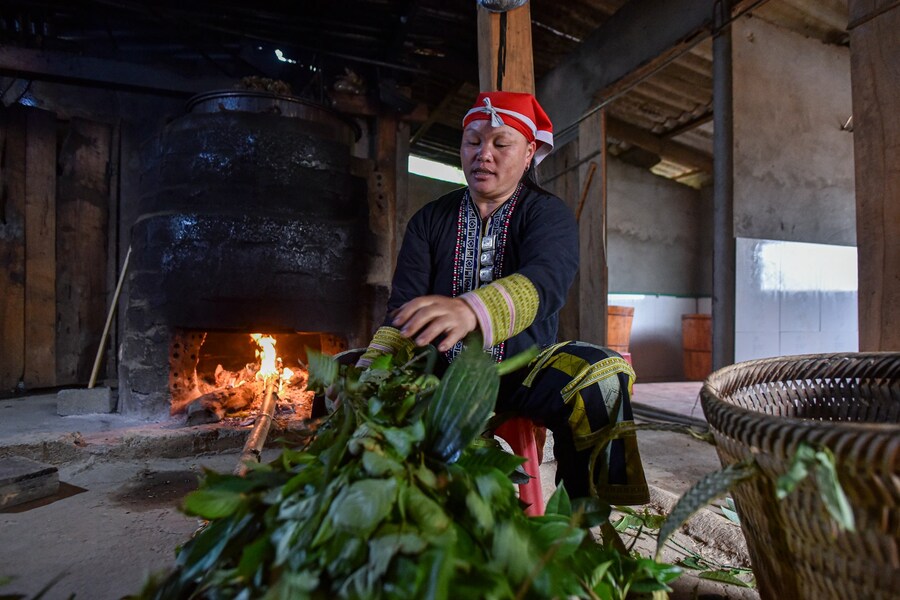
Dao people have a famous herbal bath recipe. Photo: Dan tri
One of the most fascinating aspects of Dao culture is the intricate textiles. Dao women are skilled artisans creating elaborate patterns on clothing, bags, and other textiles using vibrant colors. These textiles hold deep cultural significance, often representing daily life such as animals, religious symbols, trees, etc.

Dao people's festival attire is colorful and easily recognizable. Photo: VnExpress
Dao people have a rich tradition of spirit worship. They believe that everything has a soul or spirit called “ma”. Within the family, they worship the spirits of ancestors, parents, the kitchen hearth, and the land. They worship the village spirit, including protective and local earth deities at the village level.
H’Mong people have different names like “Mong”, “Meo”, or widely known as “Miao”. They migrated to Vietnam alongside the Dao people from China. They have a population of around 1.4 million. Northwestern mountainous regions are home to a large H'Mong population. They also inhabited China, Laos, and Thailand.
Hmong clothing is made from colorful fabrics. They use many different colored threads to embroider patterns. They often wear distinctive wide-brimmed hats for festivals or market days. Women love wearing many silver ornaments.
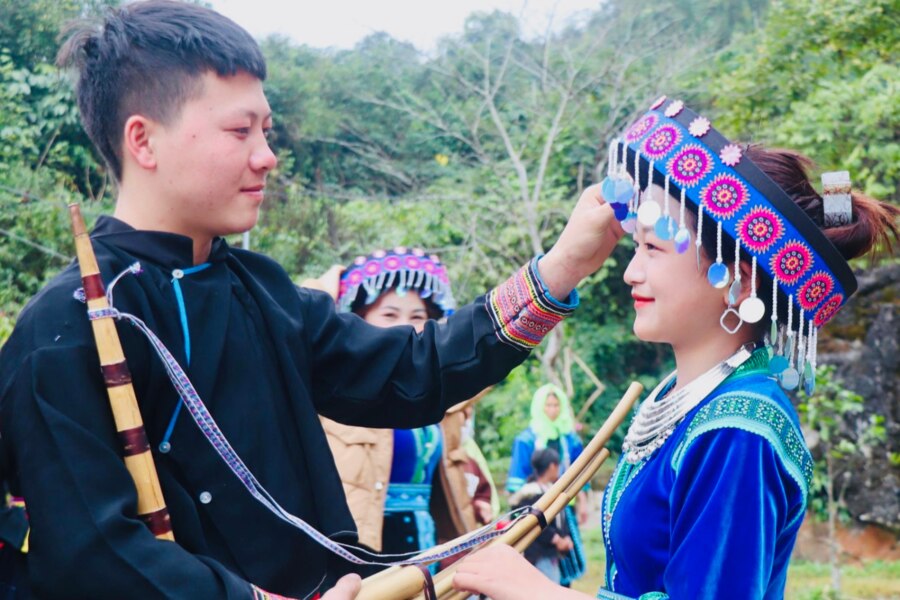
A H'mong couple in their finest attire. Photo: Lai Chau Province Web Portal
H’Mong cuisine is a highlight of the Northwest. Men men is a simple dish made from corn flour but has a significant value. Thang co is a hearty dish made from many kinds of meats and offal. Apple wine is also a popular H’Mong specialty, enjoyed both in the mountains and lowlands.
In addition, they have the title of "H'Mong King" to refer to a local leader. They would manage the community's business and economic development like a self-governing region. A particularly famous H'Mong King was Vuong Chinh Duc. He and his son led the people in non-cooperation with the French colonialists, causing them significant difficulties. His 3000 square meter mansion in Dong Van District, Ha Giang Province still exists today.

H'mong King's mansion still stands tall in the forest after a hundred years. Photo: Migo
Cham people are descendants of the once-glorious Champa Kingdom in central Vietnam. The kingdom gradually declined and eventually fell in the 19th century. Today, only 200,000 Cham people primarily reside in Ninh Thuan, Binh Thuan, and Phu Yen provinces.
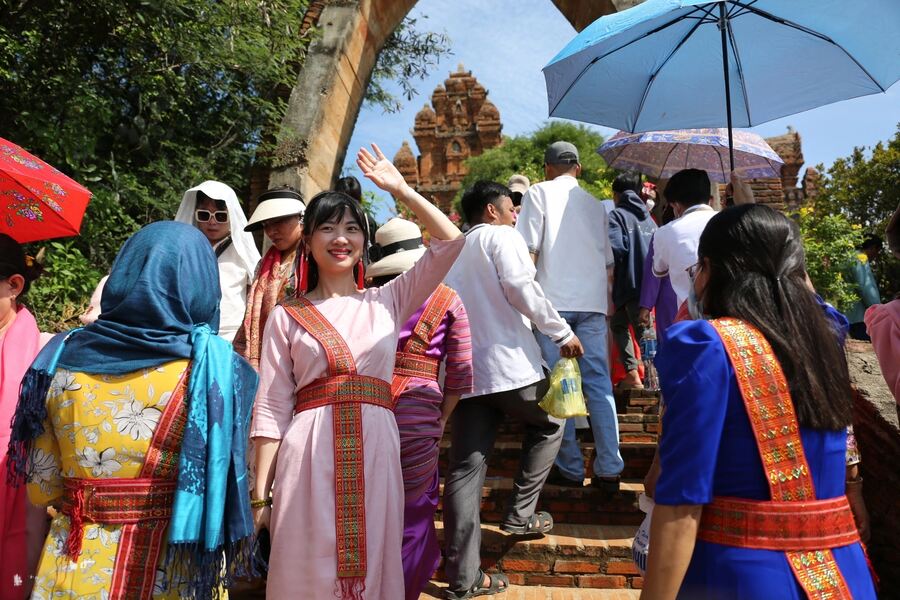
Cham people flock to Kate Festival at Po Klong Garai Tower, Ninh Thuan Province. Photo: Dan tri
Cham dance is a cultural treasure, blending religious beliefs, artistic skill, and aesthetic sensibility. Beautiful dancers perform graceful movements to the rhythm of the music, captivating the audience. If you want to experience this fascinating performance, visit the My Son Sanctuary or Cham temples during festivals.
Jrai people have lived in the Central Highlands for a long time. They have a rich heritage of history and art. Some epics like Dam San are widely known, and Jrai folk dances depict battles between tribes. They have also created musical instruments, most notably T'rung.
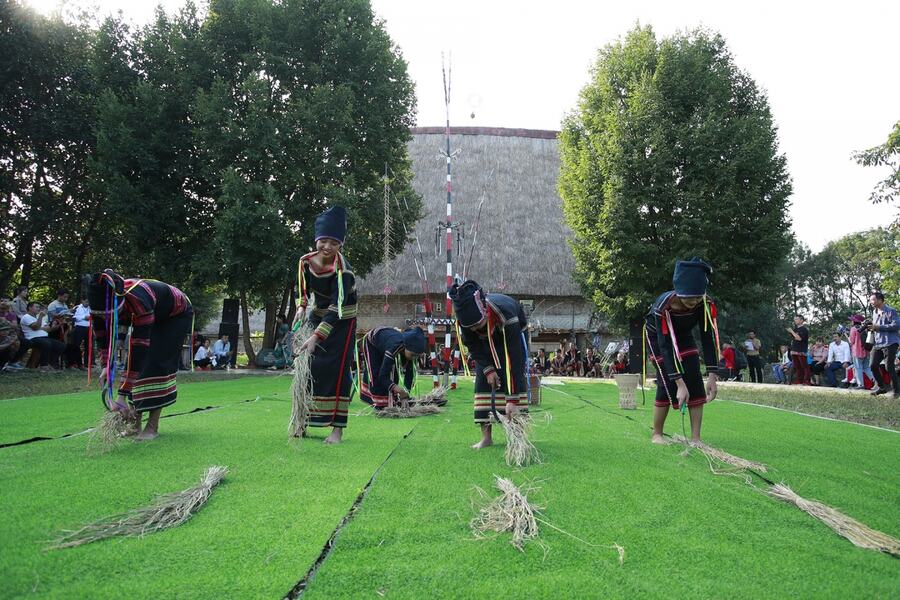
Jrai people perform a new rice harvest ceremony in front of Rong house. Photo: Pham Minh
Rong house is the hallmark of Jrai architecture. Every village has at least two. They have a large roof, a spacious interior, and are used for community activities.
Jrai men are skilled at weaving baskets and carrying bags, while women excel at weaving skirts, blankets, and cloth for clothing. Almost every Jrai person knows how to sing and dance from a young age until they are too old.
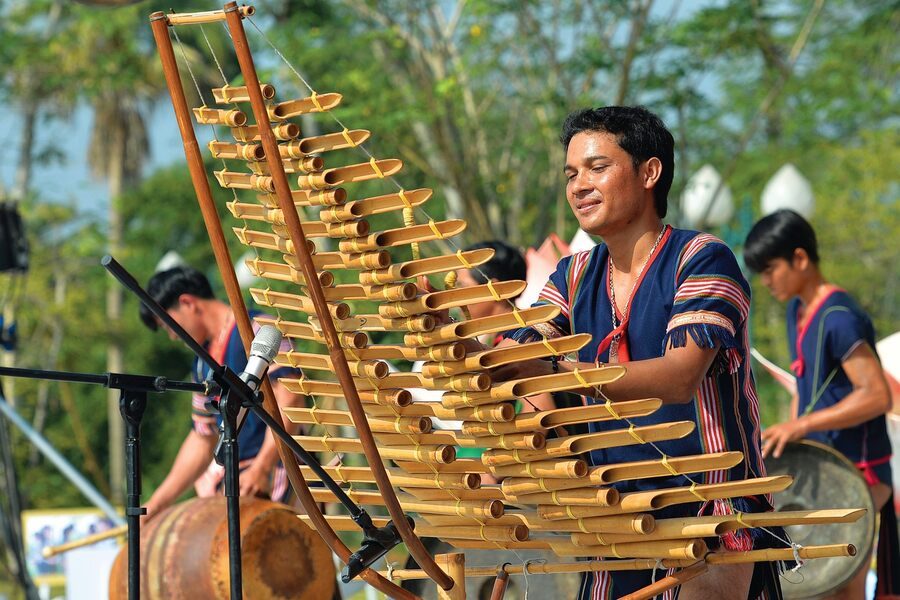
T'rung player strikes the bamboo tubes of the instrument to create music. Photo: Thong tin Doi ngoai
Approximately 400,000 Ede people live in the Central Highlands. They are known for their long stilt houses, some are several tens of meters. This tradition stems from the length of the house grows with each generation as daughters marry and join the family. The longer the house, the larger the family.
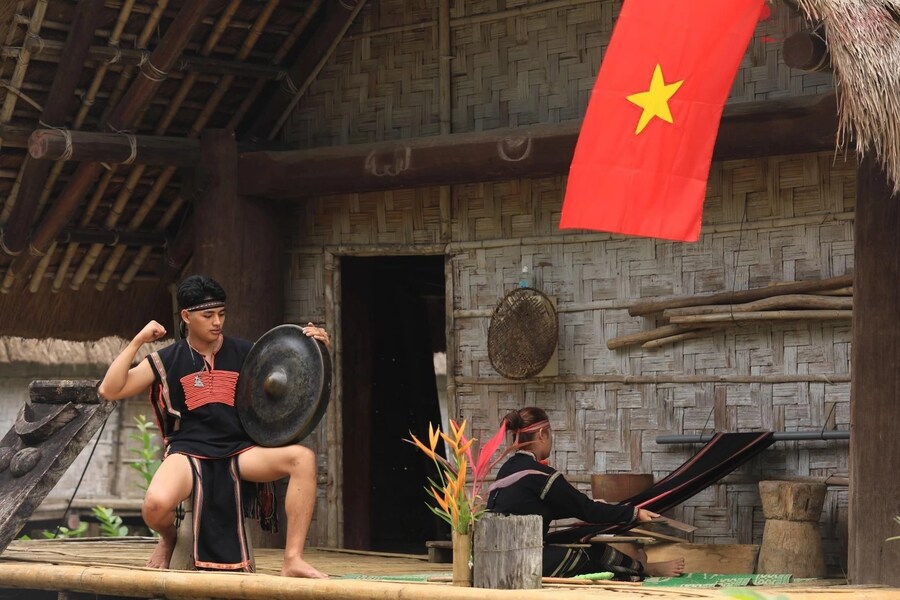
An Ede boy is practicing playing the gong. Photo: Thanh Dat
For ethnic groups in the Central Highlands, the gong is a sacred musical instrument. Ede people give each gong a name as if it were a person. They believe that a spirit lives inside each gong. Dancing to the gongs is a way for them to connect with the spirits. People dancing around a bonfire to the rhythmic beats of the gongs create a magical atmosphere for visitors to the Central Highlands.
Suggested for you: Central Highlands Tour 6 days: Tay Nguyen Great Discovery
Hoa people are Chinese immigrants, with the largest wave arriving after the fall of the Ming Dynasty in the 17th century. They primarily reside in Ho Chi Minh City, Dong Nai, and Soc Trang. Hoa people are Vietnamese has Chinese roots, separate from Chinese citizens.
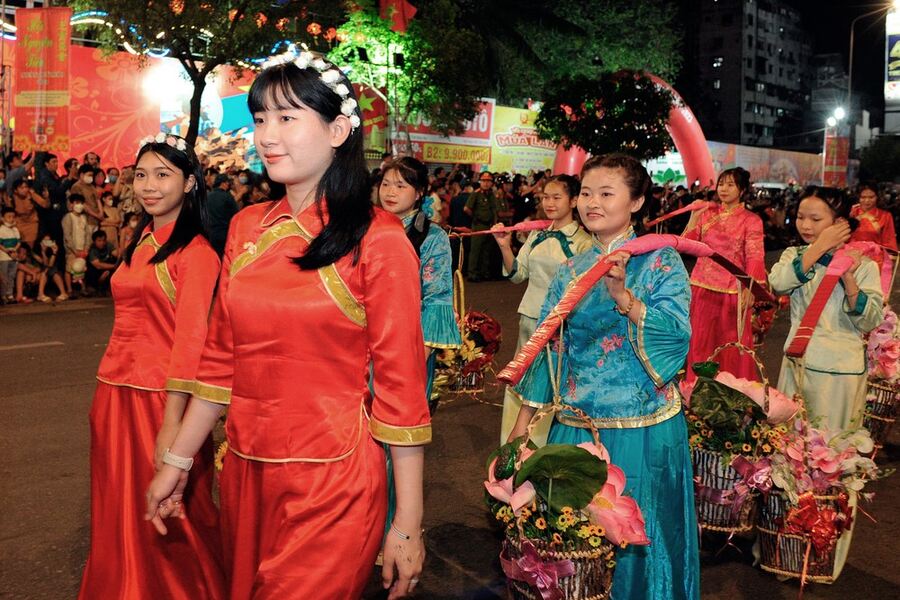
Hoa people share the culture with Kinh people while still preserving their traditional customs. Photo: Dan toc va Mien nui
Hoa and Kinh people share many similarities in customs and beliefs, allowing them to live harmoniously. On the streets, you can see Hoa businesses by their bilingual Chinese-Vietnamese signs. Many Hoa people contribute significantly to the country's business, entertainment, sports, and other sectors.
Hoa dishes originated from China, but have been adapted and become a unique feature of local cuisine. When visiting Ho Chi Minh City, don't forget to visit the Hoa community to try wonton noodles and roast duck. You'll experience a completely different flavor that other China Town globally may not be able to replicate.

Chinese cuisine has influenced the cuisine of Southeast Asian countries. Photo: De nhat mi keo
Mekong Delta has been a long-time home to the Khmer people. Therefore, it has the largest number of Khmer people outside of Cambodia, with over 1.4 million people. With Chinese and Kinh, they are the three ethnic groups that make up Vietnamese culture in the South.
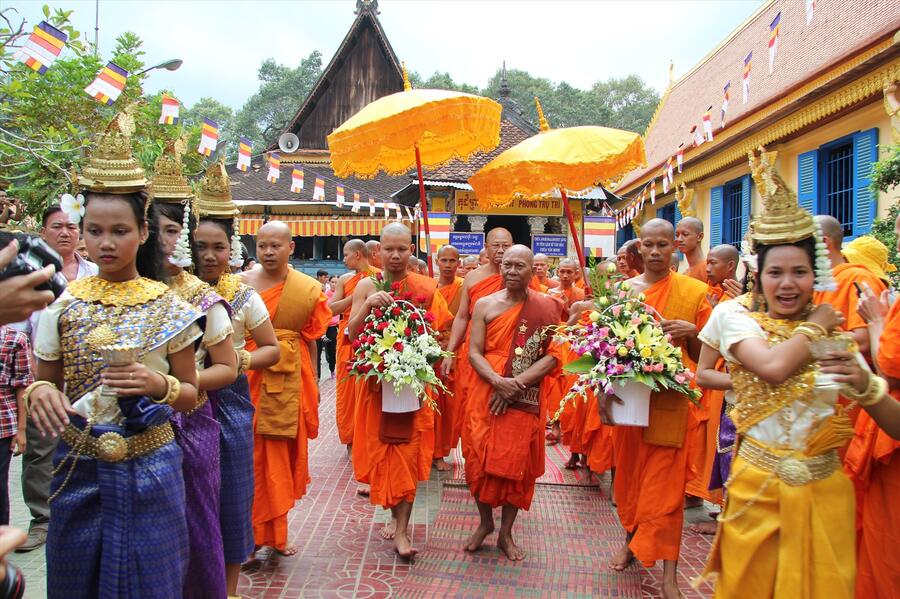 \
\
Khmer people celebrate Chol Chnam Thmay (New Year Festival). Photo: Lao dong Newspapers
Khmer people in Vietnam continue to preserve and promote their long-standing culture. New Year festivals, moon-worshipping ceremonies, and boat races, etc. are organized annually on a large scale. Many Khmer-style pagodas are popular tourist destinations in the local area.
If you have the opportunity to travel to Vietnam, head off the beaten path if possible to experience the unique cultures of ethnic minorities. You'll be rewarded with unforgettable experiences and a deeper appreciation for the incredible diversity. Contact Asia King Travel and find yourself on the most suitable tour for your purpose.
Suggested for you: Review Tourism Village of Vietnamese Ethnic Groups with detailed services